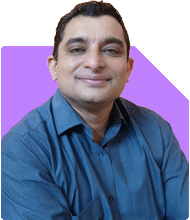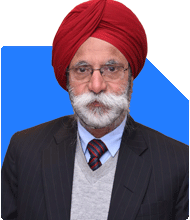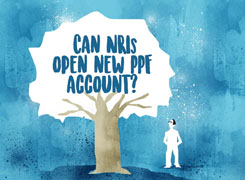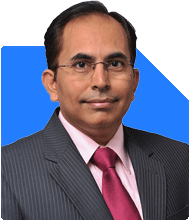Ramalingam Kalirajan |10902 Answers |Ask -Follow
Mutual Funds, Financial Planning Expert - Answered on Jun 11, 2024
He has an MBA in finance from the University of Madras and is a certified financial planner.
He is the director and chief financial planner at Holistic Investment, a Chennai-based firm that offers financial planning and wealth management advice.... more

I am 27. Earning a salary between 35K-40K INR. I earn around 10K-15K per month from trading. I want to retire by 50. How shoulf I plan
Understanding Your Current Financial Situation
Your current salary ranges between Rs 35,000 and Rs 40,000 per month. Additionally, you earn Rs 10,000 to Rs 15,000 per month from trading. You aim to retire by the age of 50. This gives you approximately 23 years to achieve your goal.
Setting Clear Financial Goals
Retirement planning requires setting clear financial goals. First, determine your desired retirement lifestyle and estimate the monthly expenses. Consider inflation, which historically averages around 6-7% in India. Analyzing these factors will help you understand how much money you need to save and invest.
Building an Emergency Fund
Start by building an emergency fund equivalent to six months of your expenses. This fund will cover unexpected expenses and prevent you from dipping into your investments.
Evaluating Your Current Savings
Assess your current savings and investments. Calculate your net worth by listing all assets (savings, investments) and liabilities (loans, debts). This evaluation provides a clear picture of your financial standing.
Creating a Monthly Budget
Develop a monthly budget to manage your expenses effectively. Track your spending and identify areas where you can cut costs. Allocate a portion of your income towards savings and investments.
Investing in Mutual Funds
Mutual funds are an excellent investment option for long-term growth. They offer diversification and professional management. Choose actively managed funds over index funds to potentially achieve higher returns. Actively managed funds have fund managers who aim to outperform the market, unlike index funds which merely replicate market indices.
Benefits of Actively Managed Funds
Actively managed funds offer the potential for higher returns compared to index funds. Experienced fund managers select stocks based on research and analysis, aiming to beat the market. These funds can adapt to changing market conditions, offering flexibility in investment strategies.
Systematic Investment Plans (SIPs)
Consider investing through Systematic Investment Plans (SIPs). SIPs allow you to invest a fixed amount regularly, reducing the impact of market volatility. They instill discipline and make investing accessible with smaller amounts.
Retirement Corpus Calculation
Calculate the retirement corpus needed using the following steps:
Estimate your annual expenses at retirement.
Adjust for inflation over the remaining years to retirement.
Determine the corpus needed to sustain these expenses through your retirement years, considering life expectancy.
For example, if you need Rs 50,000 per month today, with 7% inflation, you will need approximately Rs 2.5 lakhs per month in 23 years. Assuming you live until 80, you will need a corpus that supports these expenses for 30 years post-retirement.
Perils of Trading
Trading can be enticing due to the potential for quick profits. However, it carries significant risks. Market volatility can lead to substantial losses. Emotional trading decisions, influenced by fear or greed, often result in poor outcomes. Additionally, trading requires constant monitoring and a deep understanding of market trends, which can be time-consuming and stressful.
Risks and Dangers of Trading
Market Volatility: Sudden market movements can wipe out profits and lead to significant losses.
Emotional Decisions: Fear and greed can drive impulsive trades, resulting in poor financial decisions.
Time-Consuming: Successful trading demands continuous market monitoring and research, consuming valuable time.
High Costs: Frequent trading incurs transaction fees and taxes, reducing overall returns.
Potential for Losses: Unlike long-term investments, trading can lead to rapid and substantial losses if not managed carefully.
Long-Term Investing in Mutual Funds
Long-term investing in mutual funds offers a more stable and less stressful alternative. Mutual funds are managed by professionals who diversify investments across various assets, reducing risk. Over the long term, mutual funds have historically provided solid returns, helping investors build wealth steadily.
Diversifying Investments
Diversification reduces risk by spreading investments across different asset classes. Invest in a mix of equity, debt, and gold to balance risk and returns. Equities offer growth potential, debt provides stability, and gold acts as a hedge against inflation.
Equity Investments
Allocate a significant portion of your portfolio to equities for higher returns. Equities have historically outperformed other asset classes over the long term. Choose a mix of large-cap, mid-cap, and small-cap funds to diversify within equities.
Debt Investments
Include debt investments for stability and regular income. Debt funds, fixed deposits, and bonds are good options. They provide lower but more stable returns compared to equities.
Gold Investments
Invest a small portion in gold. Gold acts as a hedge against inflation and currency fluctuations. Consider gold ETFs or sovereign gold bonds for better liquidity and safety.
Regular Review and Rebalancing
Review your portfolio regularly and rebalance it to maintain the desired asset allocation. Market conditions and personal circumstances change, requiring adjustments to your investment strategy.
Tax Planning
Efficient tax planning enhances your savings. Invest in tax-saving instruments like Equity Linked Savings Schemes (ELSS), Public Provident Fund (PPF), and National Pension System (NPS). Utilize deductions under Section 80C, 80D, and other relevant sections.
Health Insurance
Ensure you have adequate health insurance coverage. Medical emergencies can deplete your savings. A comprehensive health insurance plan protects you and your family.
Life Insurance
Assess your life insurance needs. Term insurance is cost-effective and provides financial security to your dependents. Avoid investment-cum-insurance policies like ULIPs which have high costs and lower returns.
Surrendering Investment-cum-Insurance Policies
If you hold LIC, ULIPs, or investment-cum-insurance policies, consider surrendering them. Reinvest the proceeds into mutual funds for better returns and lower costs.
Retirement Accounts
Invest in retirement-specific accounts like the National Pension System (NPS). NPS offers tax benefits and helps accumulate a retirement corpus with professional management.
Debt Management
Manage your debts efficiently. Pay off high-interest debts like credit cards and personal loans first. Avoid accumulating new debt and maintain a healthy credit score.
Increasing Your Income
Explore opportunities to increase your income. Enhance your skills, seek promotions, or consider side hustles. Higher income boosts your savings and investment potential.
Cost of Living Adjustments
Adjust your lifestyle to manage costs. Avoid unnecessary expenses and focus on saving and investing. Simple lifestyle changes can significantly impact your financial future.
Retirement Lifestyle Planning
Plan your retirement lifestyle carefully. Consider where you want to live, your hobbies, and any travel plans. A clear vision helps estimate retirement expenses accurately.
Estate Planning
Estate planning ensures your assets are distributed according to your wishes. Create a will and consider setting up trusts if necessary. Nominate beneficiaries for all your investments and insurance policies.
Professional Financial Advice
Consider consulting a Certified Financial Planner (CFP) for personalized advice. A CFP can help create a comprehensive financial plan tailored to your goals and circumstances.
Avoiding Common Pitfalls
Avoid common pitfalls like impulsive investments, ignoring inflation, and underestimating healthcare costs. Stay disciplined and focused on your long-term goals.
Final Insights
Planning for retirement requires careful consideration and disciplined execution. Start early, invest wisely, and regularly review your plan. With the right strategies, you can achieve your goal of retiring by 50.
Best Regards,
K. Ramalingam, MBA, CFP,
Chief Financial Planner,
www.holisticinvestment.in
You may like to see similar questions and answers below
Ramalingam Kalirajan |10902 Answers |Ask -Follow
Mutual Funds, Financial Planning Expert - Answered on May 28, 2024
Ramalingam Kalirajan |10902 Answers |Ask -Follow
Mutual Funds, Financial Planning Expert - Answered on Jun 19, 2024
Ramalingam Kalirajan |10902 Answers |Ask -Follow
Mutual Funds, Financial Planning Expert - Answered on Jul 15, 2024
Ramalingam Kalirajan |10902 Answers |Ask -Follow
Mutual Funds, Financial Planning Expert - Answered on Sep 11, 2025
Anu Krishna |1749 Answers |Ask -Follow
Relationships Expert, Mind Coach - Answered on Dec 17, 2025
Anu Krishna |1749 Answers |Ask -Follow
Relationships Expert, Mind Coach - Answered on Dec 17, 2025
Radheshyam Zanwar |6748 Answers |Ask -Follow
MHT-CET, IIT-JEE, NEET-UG Expert - Answered on Dec 17, 2025
Anu Krishna |1749 Answers |Ask -Follow
Relationships Expert, Mind Coach - Answered on Dec 17, 2025
Dr Shakeeb Ahmed Khan |184 Answers |Ask -Follow
Physiotherapist - Answered on Dec 17, 2025
T S Khurana |538 Answers |Ask -Follow
Tax Expert - Answered on Dec 17, 2025
T S Khurana |538 Answers |Ask -Follow
Tax Expert - Answered on Dec 17, 2025
Janak Patel |72 Answers |Ask -Follow
MF, PF Expert - Answered on Dec 17, 2025
Ramalingam Kalirajan |10902 Answers |Ask -Follow
Mutual Funds, Financial Planning Expert - Answered on Dec 17, 2025
Samraat Jadhav |2511 Answers |Ask -Follow
Stock Market Expert - Answered on Dec 17, 2025


























